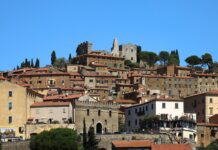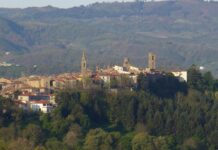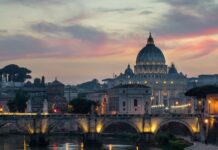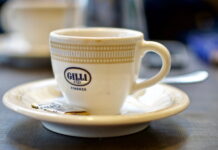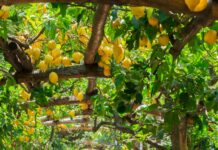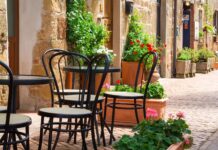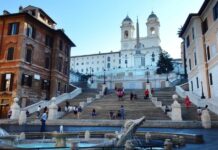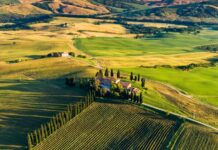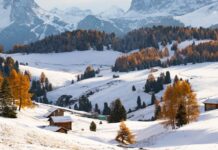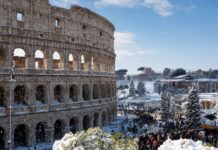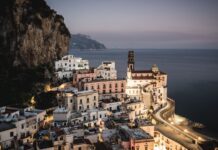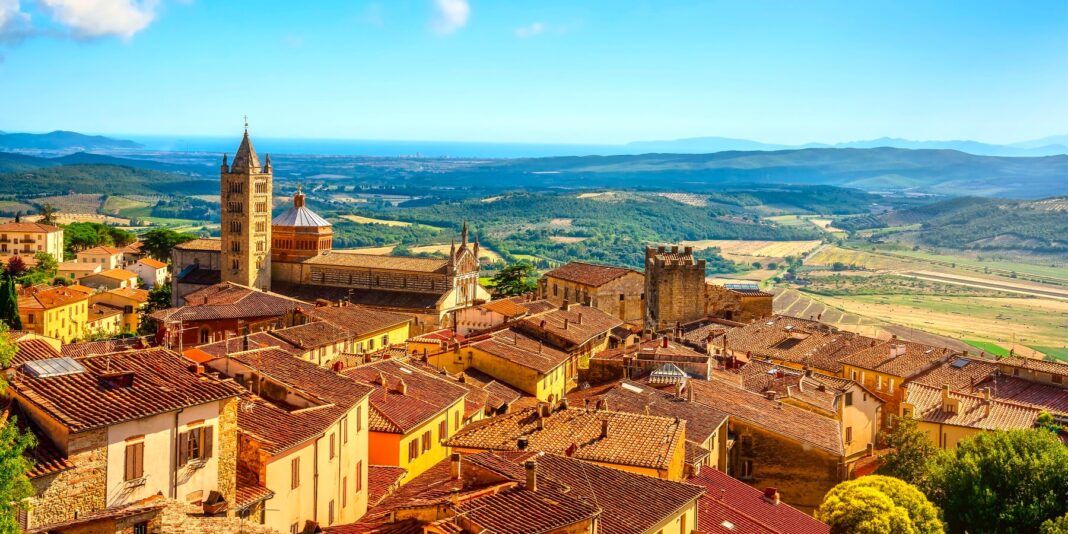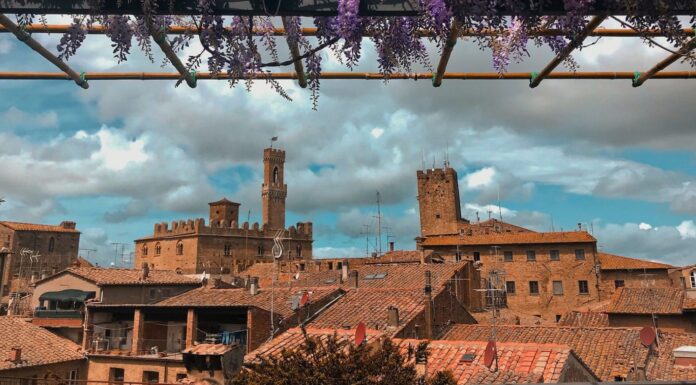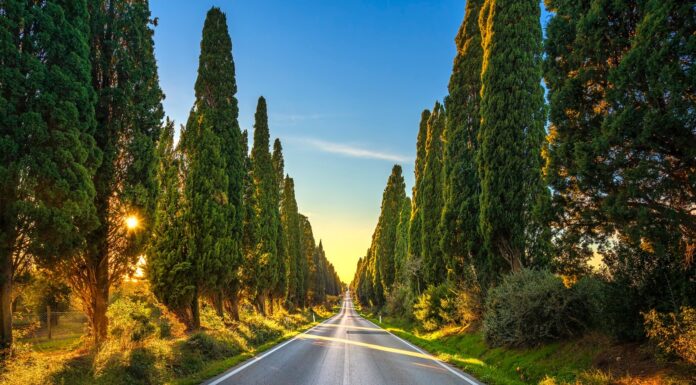Located in southwest Tuscany, the medieval town of Massa Marittima is sure to delight visitors. Filled with characteristic piazzas, historic churches, and fascinating museums, Massa Marittima offers something for every type of visitor. After a long day of sightseeing, you can sit back and enjoy a glass of the area’s famed Monteregio DOCG wine in any number of charming cafes.
With a population of around 8,000, you can reach the majority of Massa Marittima’s sites on foot, as most places are centered in the historic center. Visitors will enjoy strolling the cobbled alleyways and marveling at numerous medieval sites, including a 13th-century public fountain and tower and the imposing Cathedral of San Cerbone. Unlike some of the more popular hill towns of Tuscany, Massa Marittima does not attract hordes of tourists, meaning you can relish its authentic charm.
Keep reading to discover all the historic town of Massa Marittima can offer visitors.
How to get to Massa Marittima
Located in the Colline Metallifere, or Metalliferous Hills, Massa Marittima is just over two hours from Florence and about 2 hours and 40 minutes from Rome. Its location makes it an ideal stop to add to your Tuscan itinerary. Although it is possible to use public transportation to reach Massa Marittima, a car is recommended.
- From the northern coast: Follow E80 until exiting at Follonica Est. Continue to follow SR 439 following directions to Massa Marittima. Next follow Volterra-Massa Marittima: SR68, then SR 439.
- Public Transportation: The nearest train station is Follonica, about 12 miles from Massa Marittima. You can purchase train tickets and find timetables on Trenitalia. There are regular bus services from Siena, Follonica, and Grosseto. Visit Autolinee Toscane for information on tickets and timetables for buses in Tuscany.
- Air: There are several airports within a few hours of Massa Marittima. The closest major airports include Florence’s Amerigo Vespucci International Airport (79 miles), Pisa Gailelo International Aiport (79 miles), Rome’s Fiumicino International Airport (136 miles), and Rome’s Ciampino International Airport (148 miles).
Read more: Day Trips from Florence — 15 Unforgettable Tours
Top things to see & do in Massa Marittima
1. Cathedral of San Cerbone
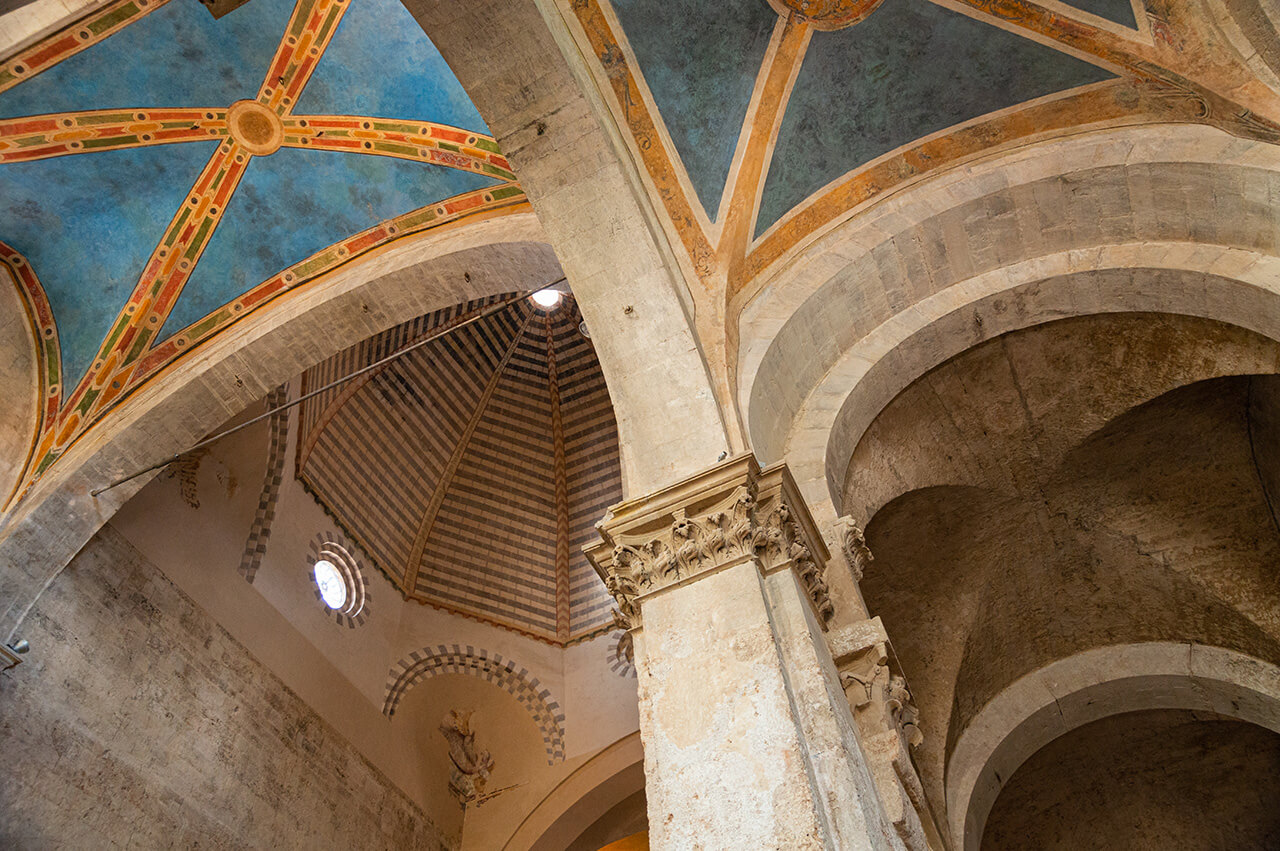
The Cathedral of San Cerbone, also known as the Duomo di Massa Marittima, is a Roman Catholic church dedicated to Saint Cerbonius. Its location is unique because it is positioned in the main piazza at a diagonal angle, which contrasts with the architectural norm of the time.
The Cathedral of San Cerbone displays two different architectural styles; both Romanesque and Gothic. Construction began in the 11th century but was not completed for several hundred years. The bell tower dates back to the 13th century.
Read more: Cathedrals in Italy – Exploring Italy’s Historic Treasures
2. Historic Center
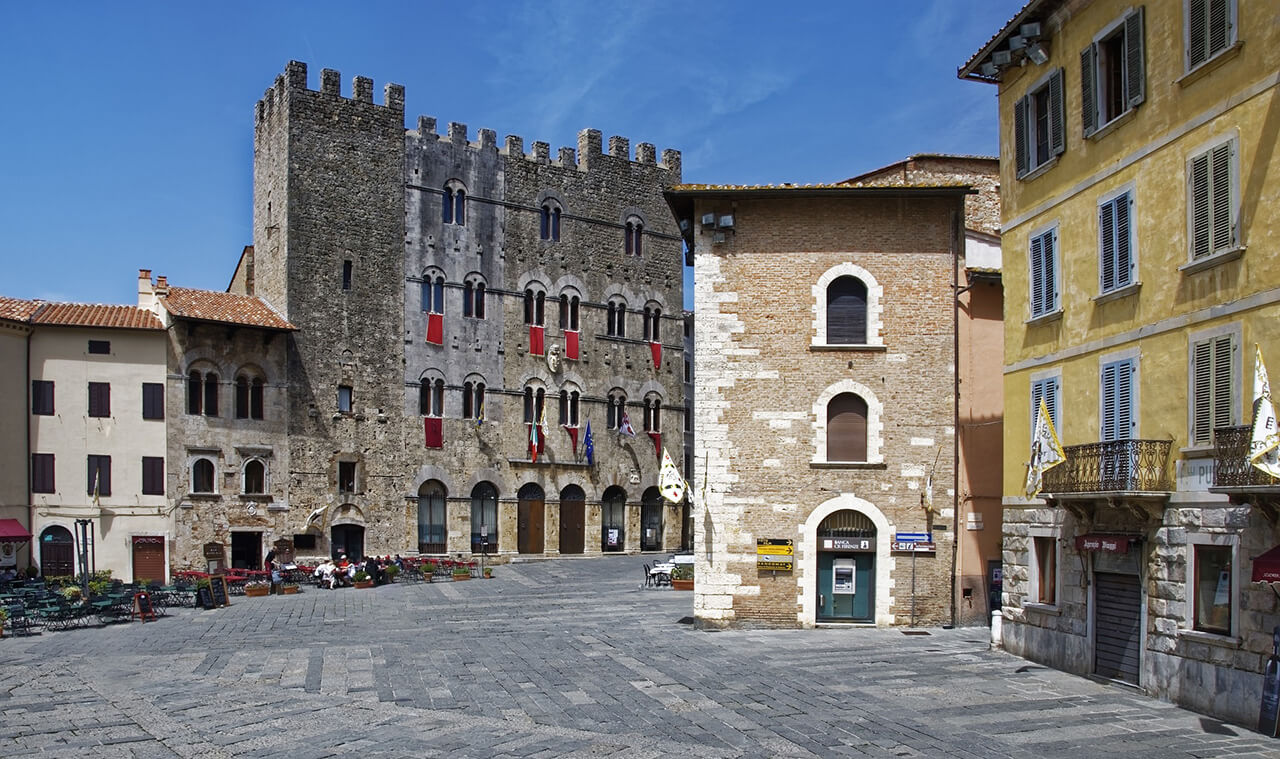
The centro storico, or historic center, of Massa Marittima, is centered around the bustling Piazza Garibaldi. There are many cafes and restaurants to choose from, offering outdoor seating. Many of the most famous historical sites of Massa Marittima are located here, including the Palazzo del Podestà, which houses the archeological museum, the Palazzo Comunale, and the Loggia del Mercato. Beyond the piazza is the il Palazzetto della Zecca, or Mint.
Also visible are remains of the ancient city walls that once surrounded the entire historic center. Several medieval gates, such as Porta Silici and Porta San Bernardino, can be seen.
3. The Source of Abundance (Fonte Pubblica)
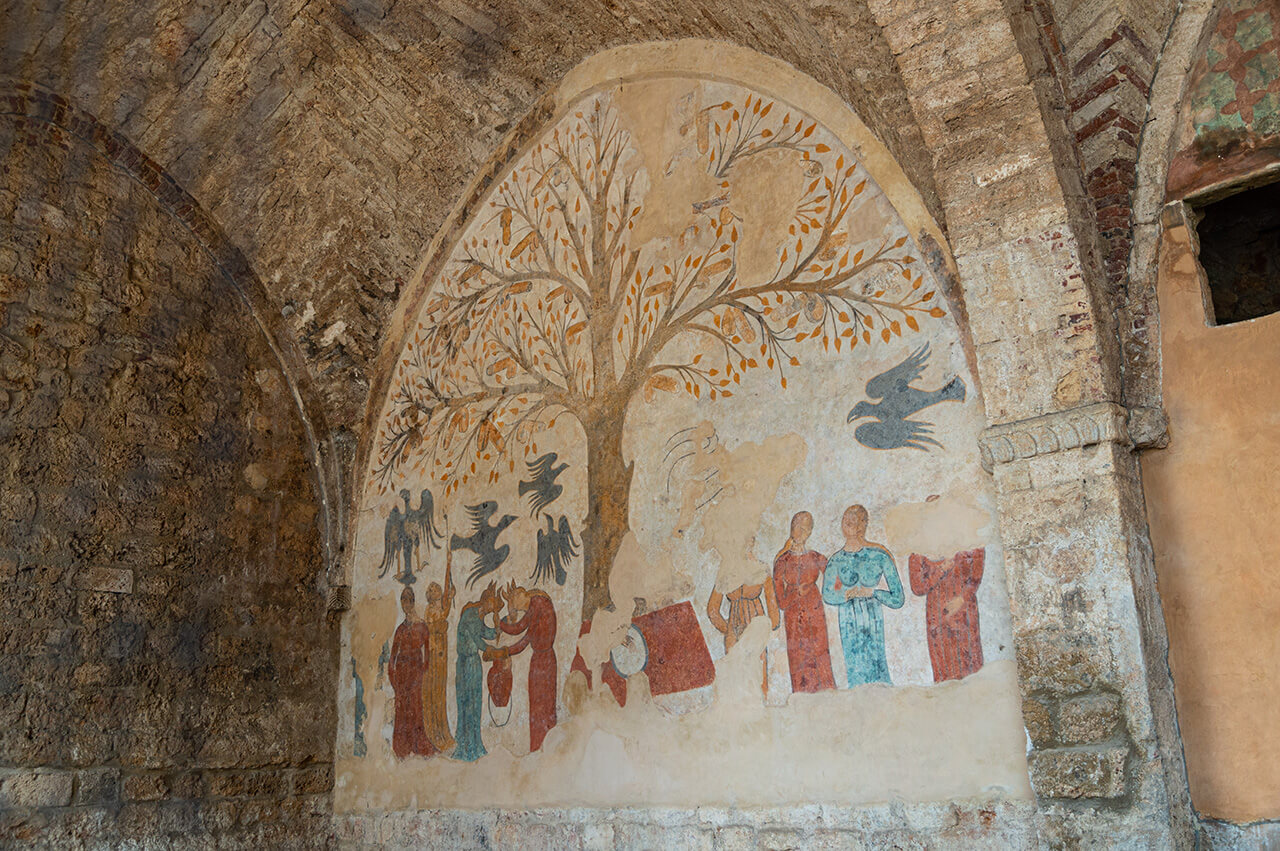
Located near the center of Massa Marittima is the extraordinary Fonte Pubblica, also known as the Source of Abundance. During restoration work in 1999, a 13th-century fresco was discovered under several layers of plaster and limestone. This somewhat risque fresco pictures the Tree of Fertility, a large tree with multiple phallic-like images hanging from the tree. Situated below the tree are women rushing to collect the tree’s fruits. The picture likely served as a symbol of fertility and was created in the hopes of a bountiful crop harvest.
4. Torre del Candeliere
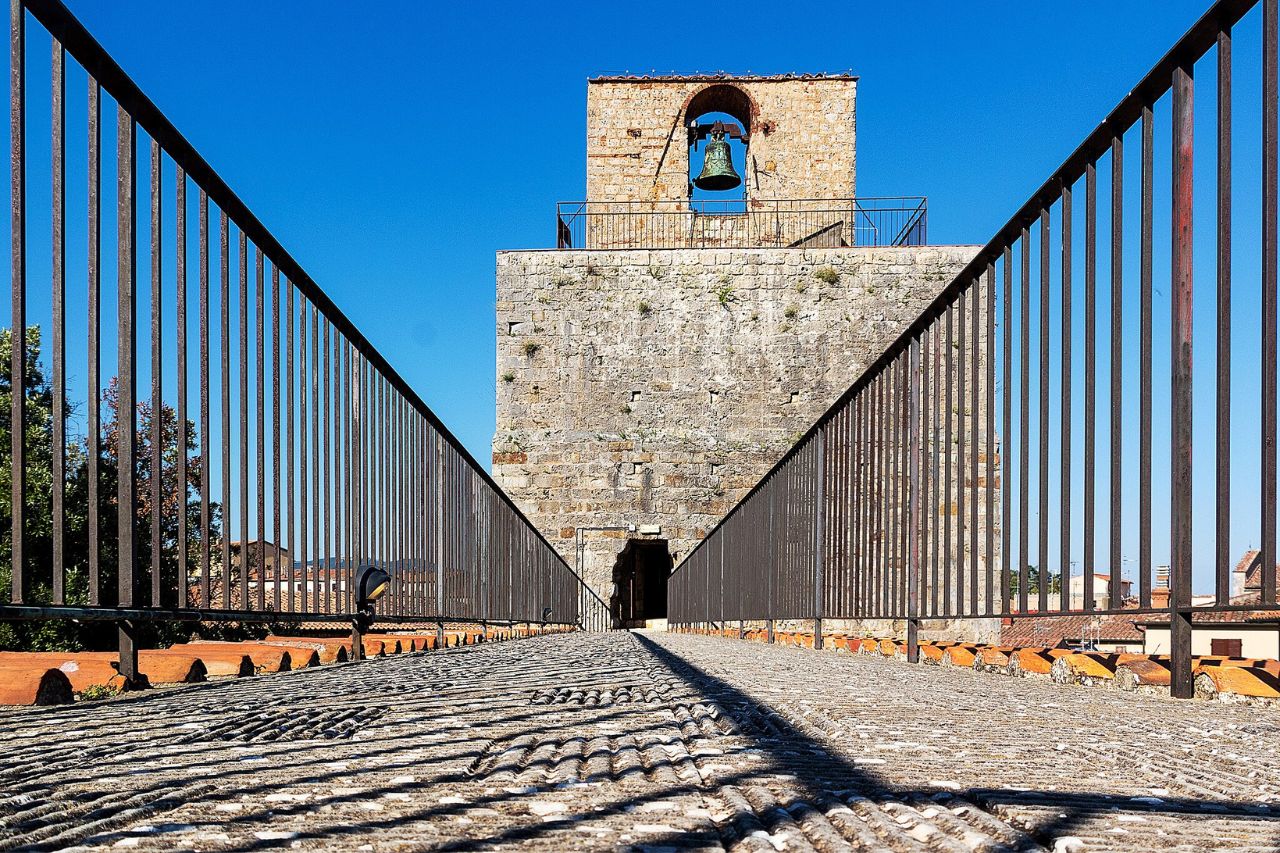
The Torre del Candeliere, also called the Clock Tower, is a historic monument built in 1228. It was built to celebrate the town’s expansion outside the Old Town. Its purpose was to serve as a watchtower, but it also symbolized the superiority of Massa Marittima. It was modified in the 15th century, and the bell was added. Soon after, a clock was added. In 1985 the clock tower was opened to the public. At the top, you can enjoy sweeping views of the surrounding landscape, including the sea in the distance.
5. Museums
Archaeological Museum
Massa Maritimma’s Archaeological Museum is in the medieval Palazzo del Podestà. The museum is divided into two main sections. The ground floor contains displays of items from prehistoric times, while the first floor contains artifacts from Etruscan times. Many artifacts come from the archeological digs completed in the Accesa Etruscan territory. Of particular note are a Neolithic stele statue and lifesize recreations of two grottos depicting both a home and a tomb.
Mining Museum
The Mining Museum is housed in the historic mine tunnels near Massa Marittima’s historic center. The tunnels were expanded and used as bomb shelters during World War II. Founded by retired miners in 1980, the museum’s purpose is to give a glimpse into the local mining culture. Although mining in the area has ceased, it once served as an essential economic factor in the town’s growth.
On display among the 2000 feet of tunnels are various objects, tools, and machines used in mining. The museum provides information on mineral extraction techniques. The different structures used to support mine roofs and minerals are also visible. The museum is only accessible with a guide, which is included in the price of admission.
Antica Falegnameria
Once a simple shop, the Antica Falegnameria is now a museum displaying the original tools and machinery of the Fogeschi Family’s carpentry shop in Gerfalco (Montieri). The carpentry shop existed for many generations before the last descendant closed the shop in 1990. Now it is a reminder of an age-old tradition that’s quickly disappearing.
6. Lago dell’Accesa
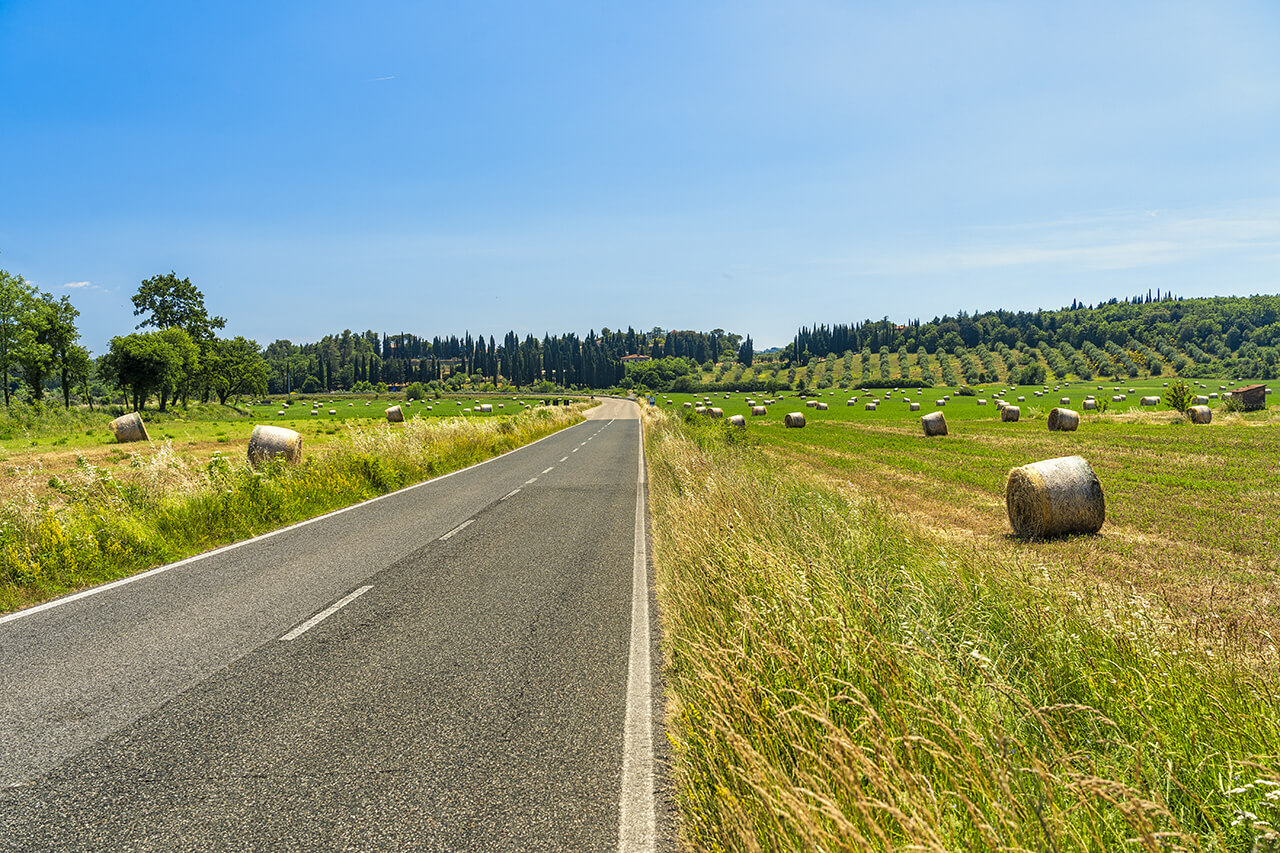
The Lago dell’Accesa Archeaelogical Park is located about 5 miles from Massa Marittima. It is situated around a small lake.
According to legend, the lake did not exist until July 26, 1218. On this day, the feast day of Saint Ann, some of the local townspeople chose not to celebrate the saint that protects the harvest. Around noon, the earth shook, and where there was once a wheat field, a lake had been formed.
A necropolis and settlement are situated close to the lake. Archeological excavations have revealed numerous remains of four Etruscan villages dating from the 9th and 6th centuries BC. These villages were likely linked to the mining of the local copper. There were also many tombs found here. Today only the foundations of some of the structures are visible. It is a pleasant place to walk and offers a refreshing swim in the summer.
7. Taste the Monteregio wine of Massa Marittima
Several wines are produced in the Metalliferous Hills surrounding Massa Marittima. The vineyards are above an altitude of 1246 feet, where the microclimate and the cool breeze from the nearby Tyrrhenian Sea impact the characteristics of the grape.
The most notable wine is Monteregio, a red wine awarded DOC (Denomination of Controlled Origin) status in 1994. You can visit many of the local cellars and wine bars. The Tourist Office organizes wine tours.
Explore more: Southern Tuscany – Best Towns, Where to Stay, and Itineraries
Suggested Accommodations
Massa Marittima offers visitors several affordable accommodation types, including hotels, B&Bs, and agriturismos, or working farm stays. You are sure to find something that will suit your needs.
Family-run Hotel with Pool
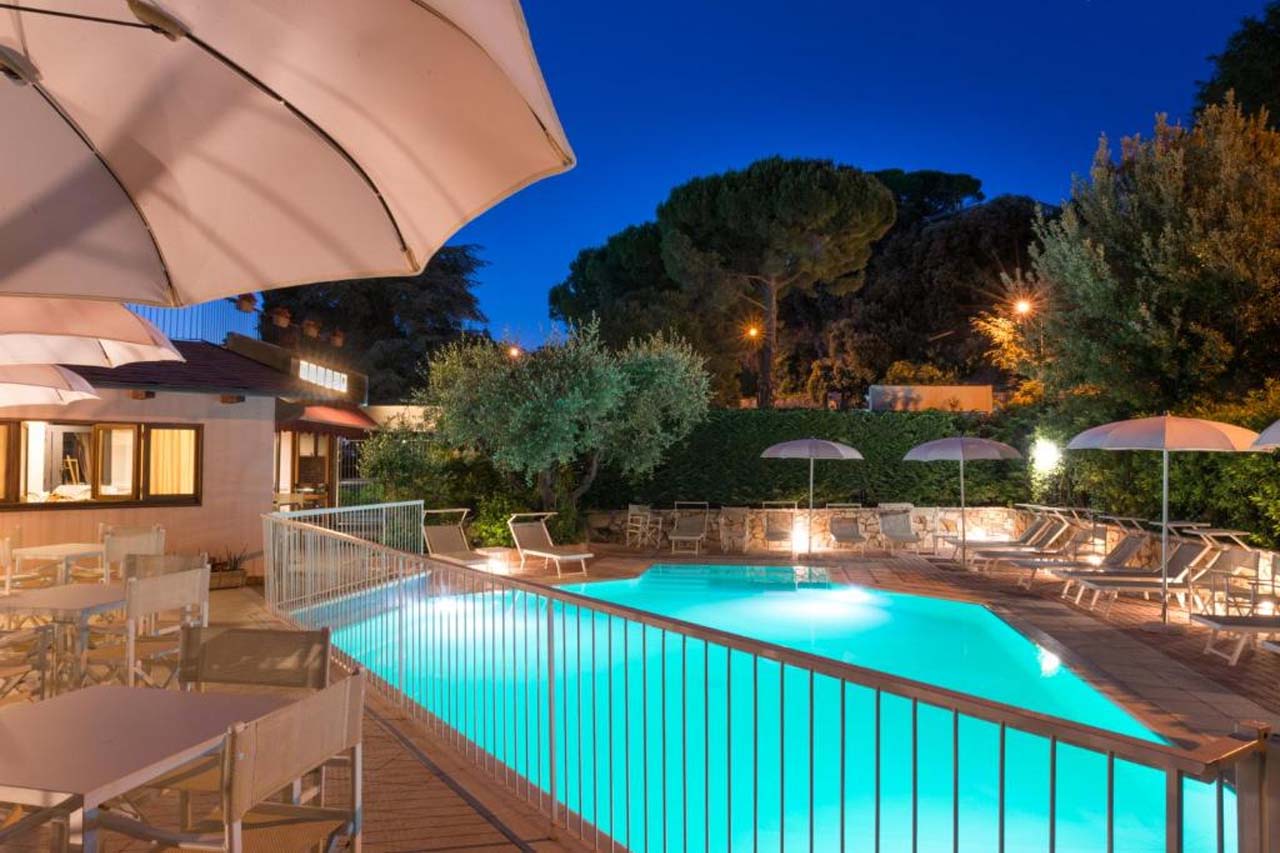
Located within walking distance of the center, Duca del Mare offers guests clean and modern rooms. Panoramic balcony views are available in some rooms.
Working Farm Surrounded by Nature
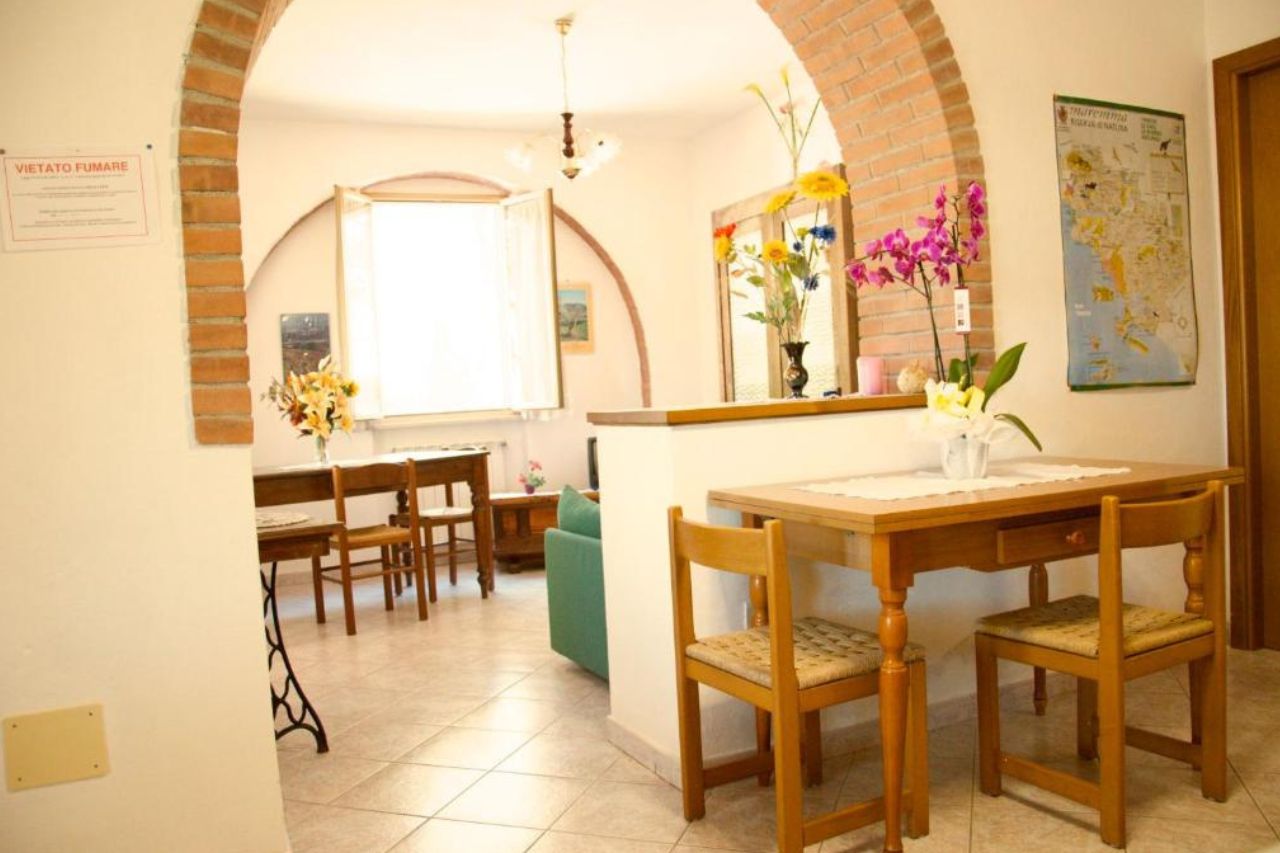
Agriturismo San Lino-Gilberto is about a 10 minute drive from Massa Marittima. Producing olive oil and wine, it offers guests a relaxing stay. There is also a swimming pool, free bikes, a garden, and a children’s playground.
Clean B&B in Historic Center
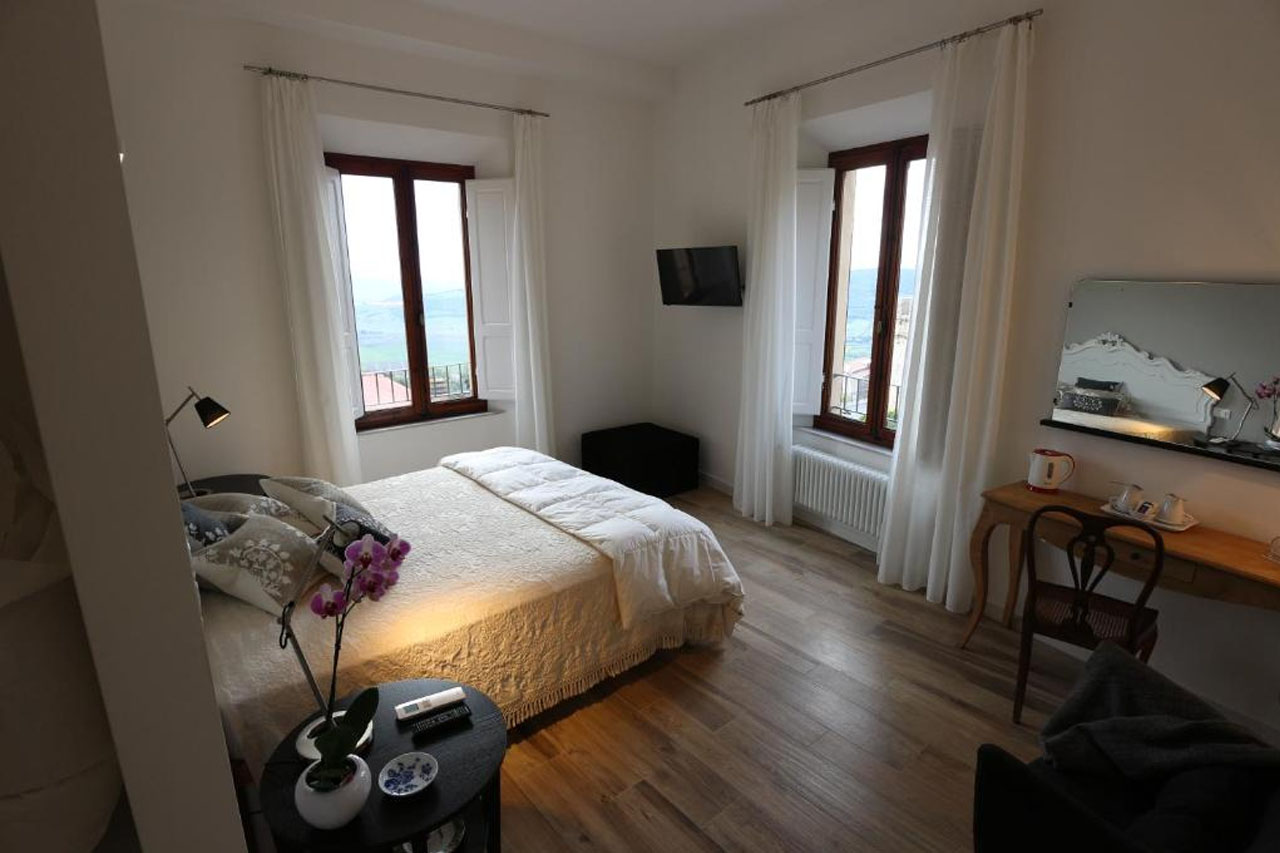
The AL 32 B&B is situated in the historic center next to the Mining Museum. It offers clean rooms, a delicious breakfast, and a shared lounge.
A Brief History of Massa Marittima
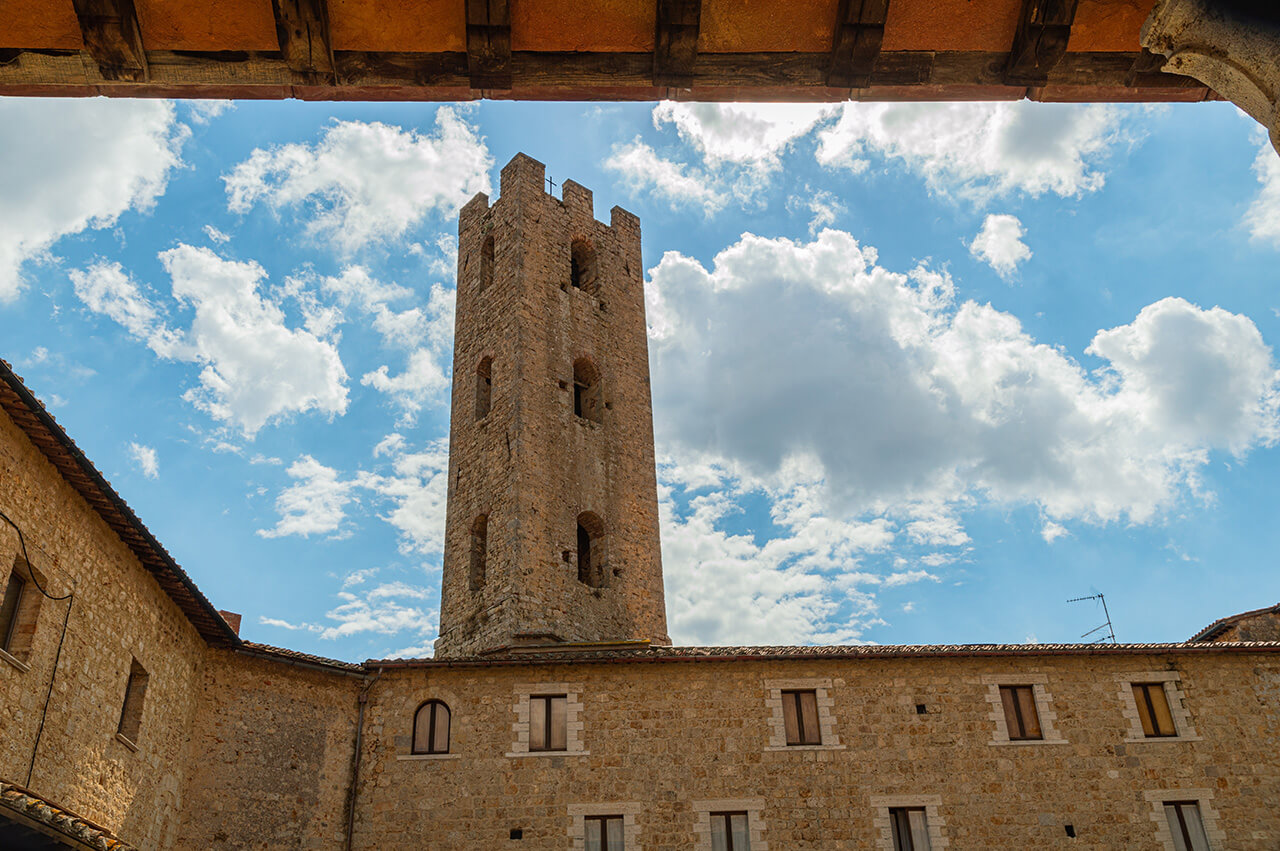
Massa Marittima has been occupied since the last phase of the Paleolithic era through to the Bronze and Iron Ages. Later, the Etruscans and Romans occupied the land. Mining silver, copper, and pyrite in the Metalliferous Hills was an important economic activity for the Etruscans, Romans, and during the medieval periods. A pivotal moment in the town’s history occurred when the bishop‘s seat was transferred to Massa Marittima. During the 13th and 14th centuries, the town experienced the most wealth and, subsequently, development due to the mining of local minerals.
Nearby Attractions
Suvereto and its Wines
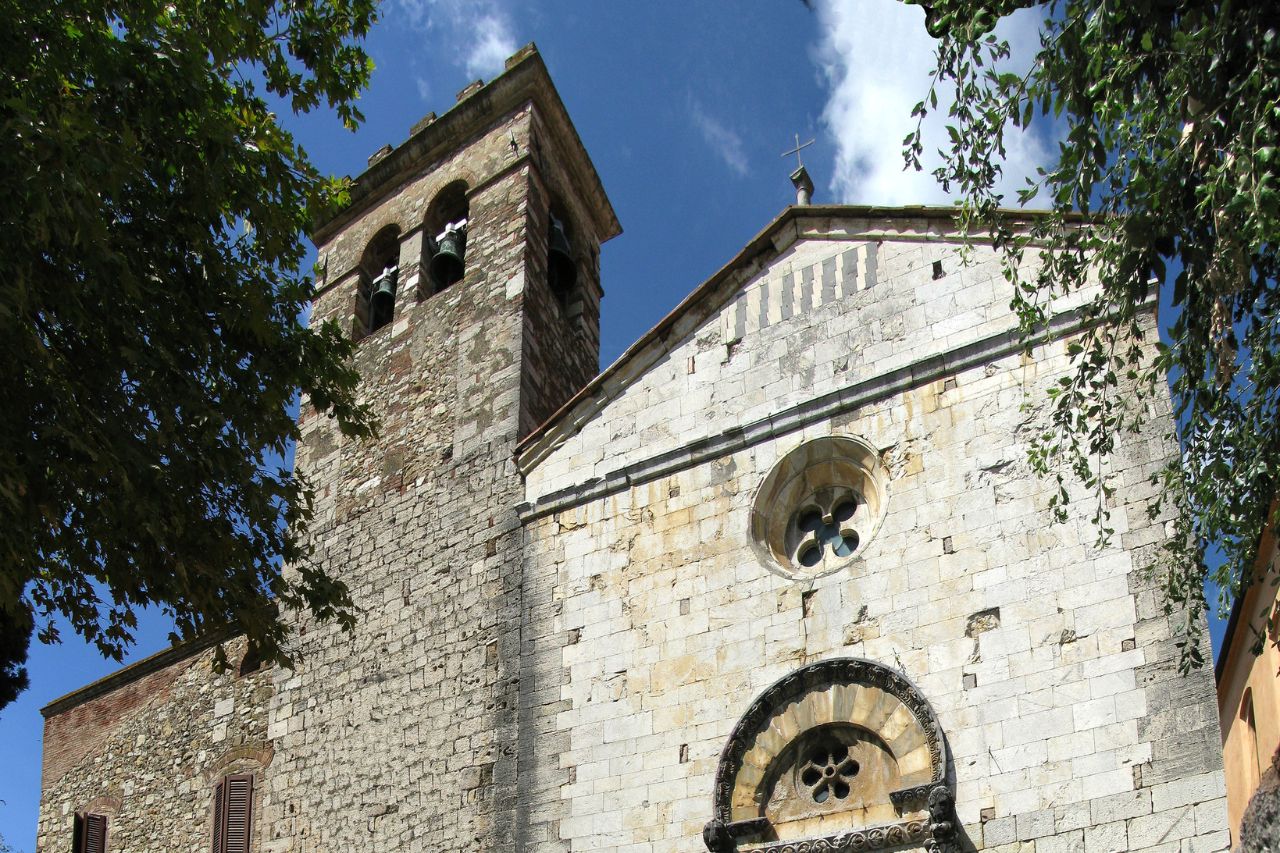
Situated between the hills and sea, Suvereto is designated as one of Italy’s most beautiful villages. A 30-minute drive from Massa Marittima, it features ancient medieval walls, tiny alleys, characteristic churches, and several historic buildings.
While in Suvereto, be sure to try one of its notable wines. With its own appellation, Suvereto was awarded full DOCG status in 2011 for its red Cabernet Sauvignon, Merlot, and Sangiovese wines.
Read more: Best Wineries in Tuscany – Dreamy Wine Trips
Follonica and its Beaches
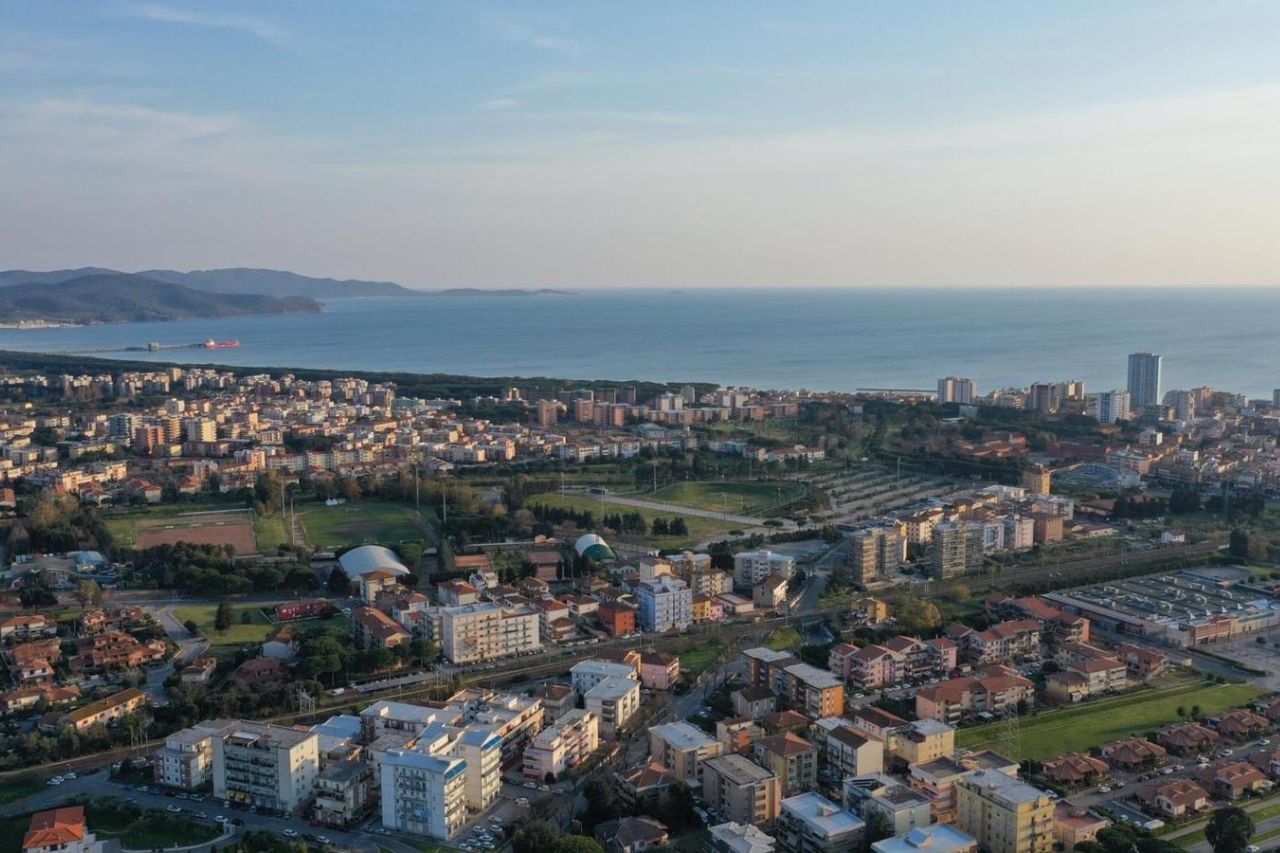
Located only 12 miles from Massa Marittima, Follonica is a popular seaside resort known for its incredible beach. It’s been awarded a blue flag for its clean, clear water and a green one because it is suitable and safe for children. The Prato Ranieri beach is especially beloved for its sandy beach and clear water.
Follonica offers more than just beaches. The town is home to the Museum of the Cast Iron Arts of Maremma, the neoclassical Church of San Leopoldo, and the Civic Art Gallery.
Explore more: Maremma – A Rich Spread of Tuscany’s Diversity
The Medieval Towns of Montieri and Montemassi
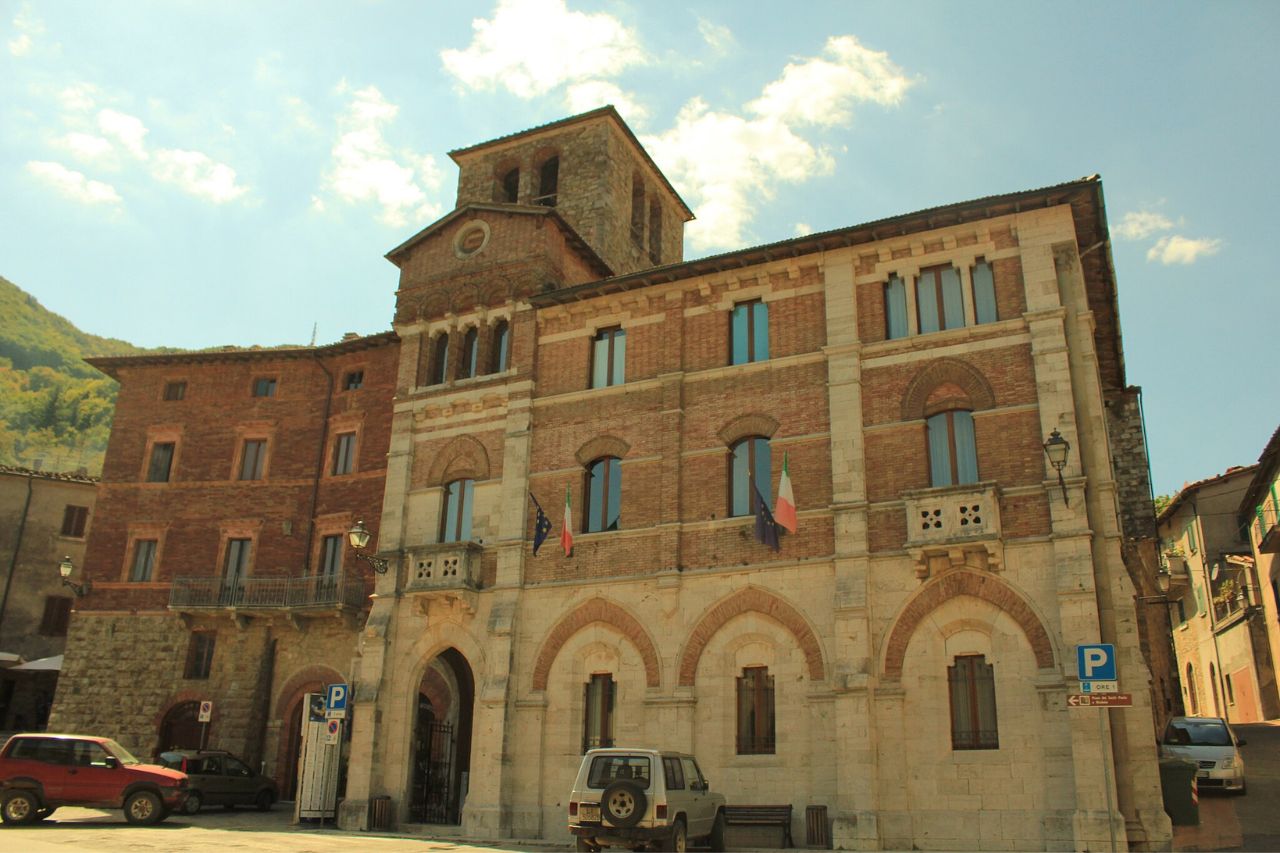
Perched on the side of a hill, lovely Montieri is about a 30-minute drive from Massa Marittima. Formerly an Etruscan settlement, then later Roman, mineral deposits are abundant in the surrounding hills. Several mining tunnels from the Etruscan and Roman times have been discovered, the most interesting being the medieval Buca delle Fate. Montieri’s characteristic streets are pleasant for strolling. Several traces of its medieval heritage are visible, including several towers from the city walls, 14th-century tower houses, and the Cassero, which was part of the castle that linked the prisons.
Despite a population of fewer than 200 people, Montemassi offers visitors some exciting sites. Most impressive is the ancient castle that belonged to the noble Aldobrandeschi Family. It was an essential stop along the salt routes. Also visible is an old government palace and a well-preserved rectangular tower. Montemassi is depicted in a famous fresco traditionally attributed to Simone Martini – Guidoriccio da Fogliano at the Siege of Montemassi – that can be seen in the Palazzo Pubblico in Siena.


